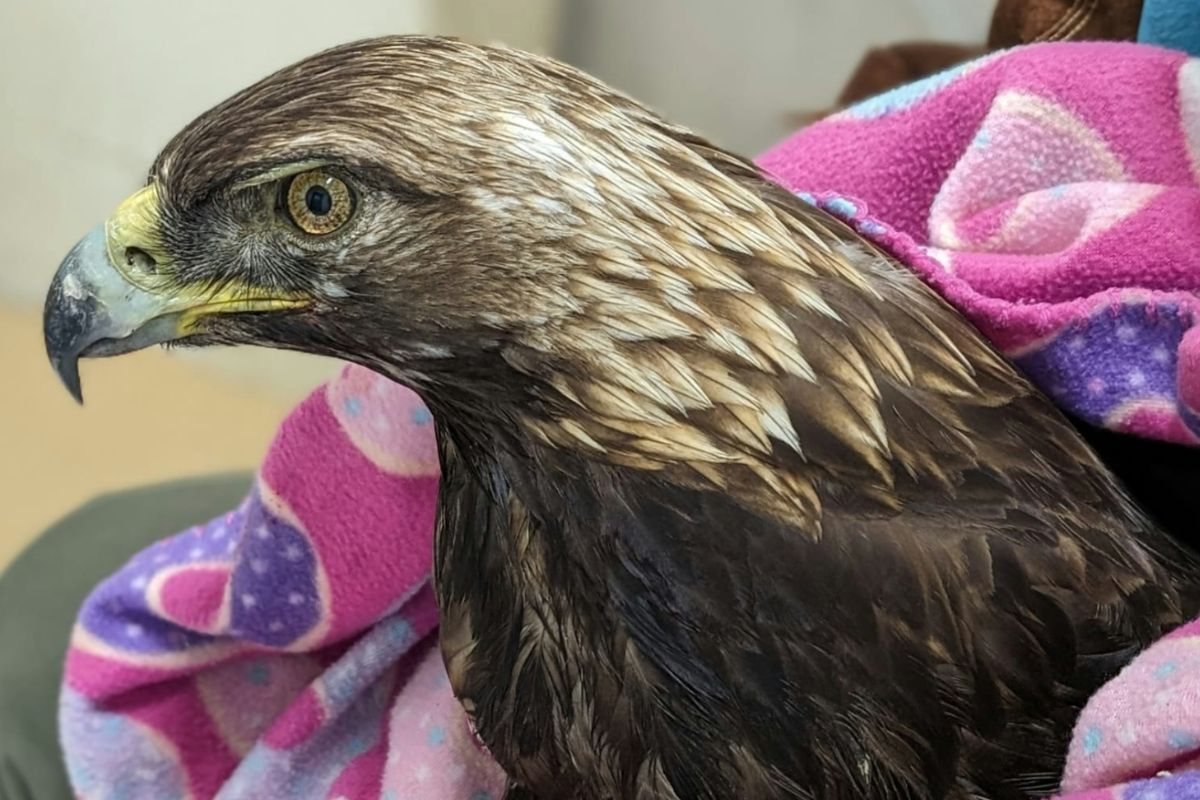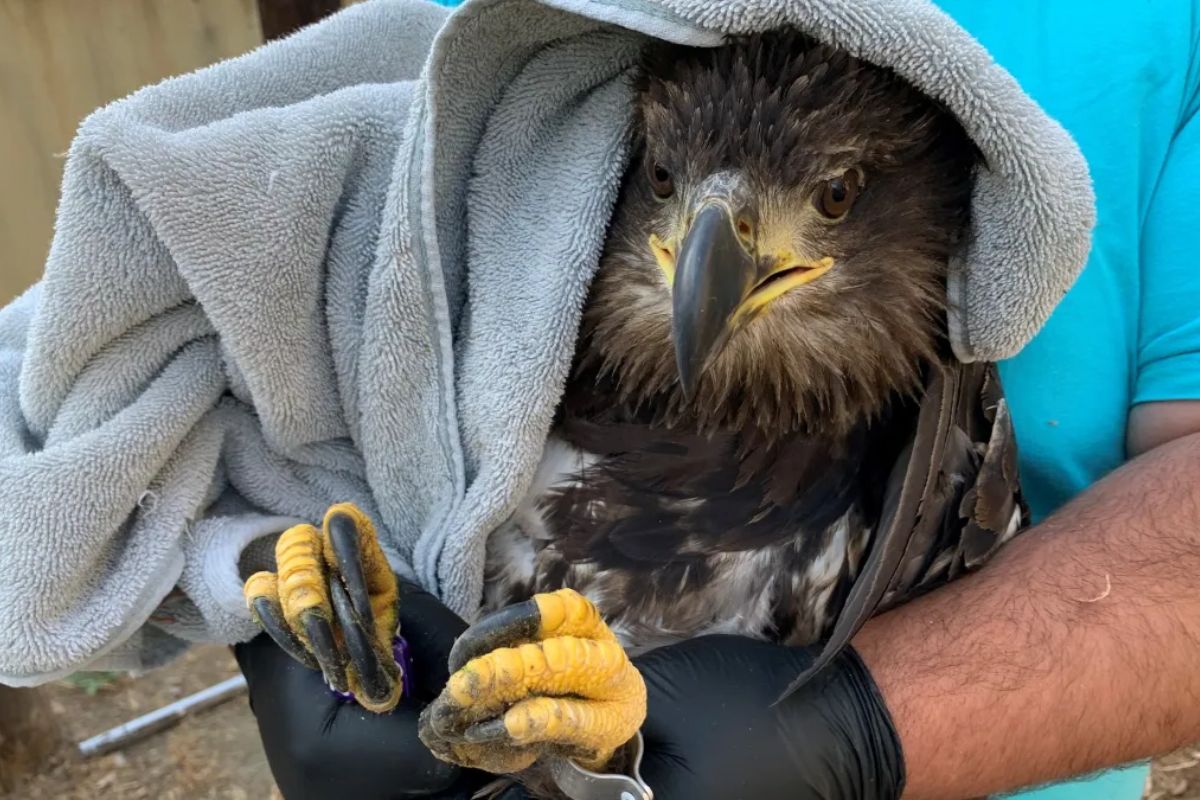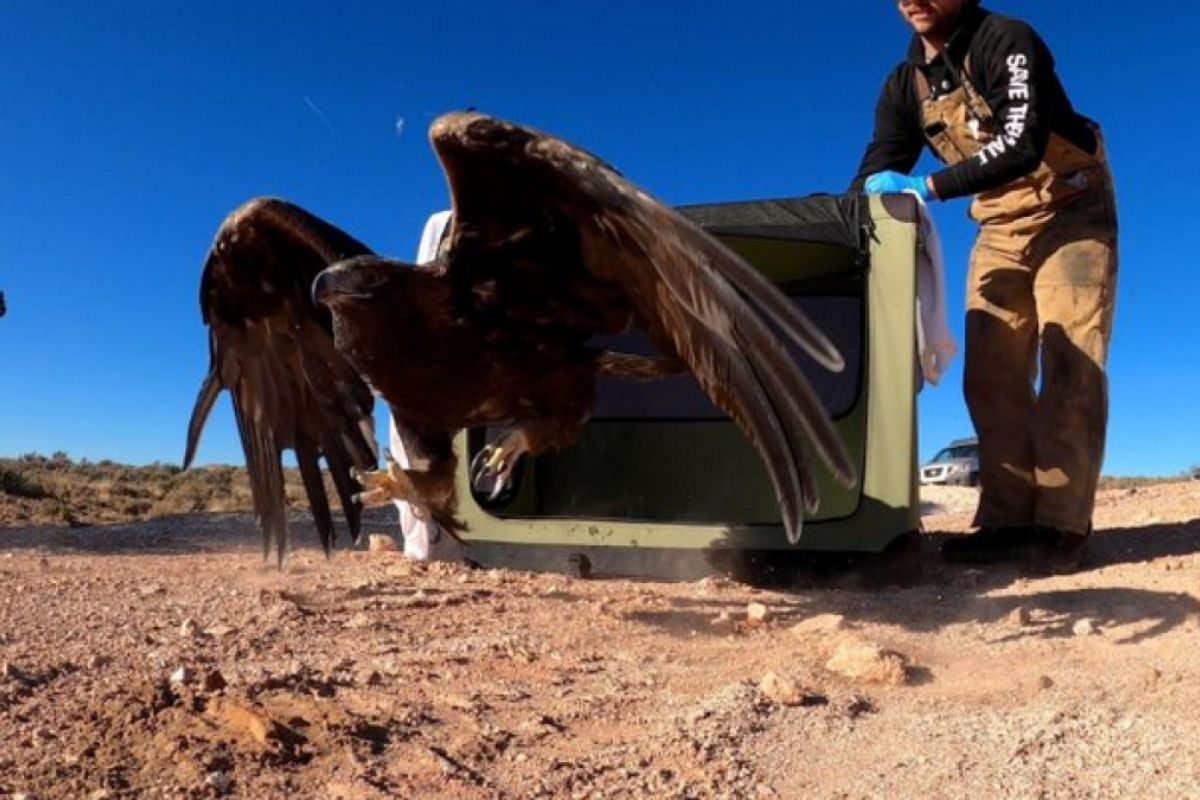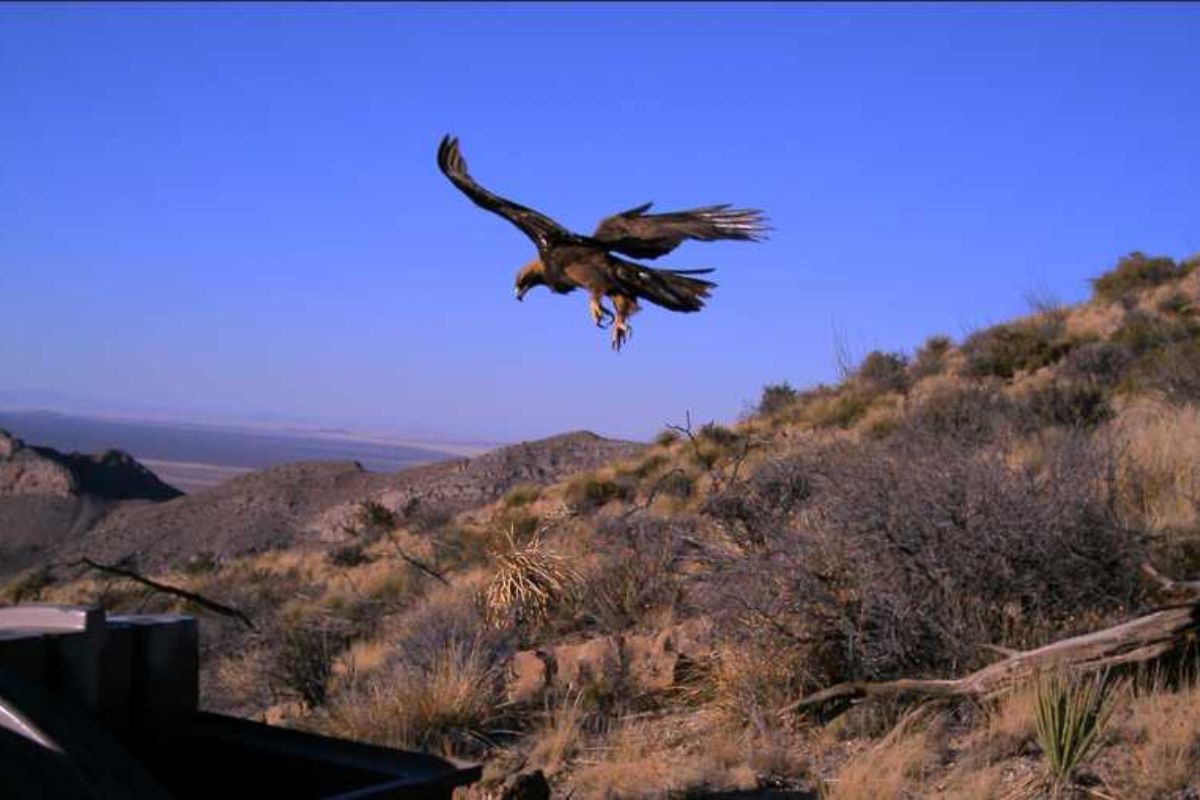Wings of Freedom Rescued Golden Eagle Returns: Imagine a majestic phoenix rising from the ashes; now picture a golden eagle soaring back to the skies of Southern California after a remarkable journey of rescue and recovery.
This magnificent bird, once on the brink of despair, has defied the odds and made a triumphant return to its natural habitat.
The tale of this eagle’s resilience and the dedicated efforts of a team of wildlife experts paint a compelling narrative of hope and restoration.
Stay tuned to discover the incredible details behind this heartening story of survival and perseverance.
Key Takeaways
- Successful rehabilitation of a once-grounded golden eagle
- Expert care, tagging, and monitoring for conservation efforts
- Triumphant return to its natural habitat in Southern California
- Community support and collaborative rescue efforts celebrated
Discovery and Initial Condition of the Golden Eagle
Upon discovery by a concerned community member in San Jacinto, Riverside County, the golden eagle was found unable to fly, covered in mud and manure, displaying mild abrasions on its feet, and noticeably underweight. These initial observations raised concerns about the eagle’s health and ability to survive in the wild. The presence of mud and manure suggested that the eagle might’ve been grounded for an extended period, hindering its natural behaviors and foraging abilities.
The mild abrasions on its feet indicated potential struggles with perching or walking, further highlighting the severity of its condition. Additionally, the noticeable underweight status of the eagle signaled possible malnutrition or an underlying health issue that needed immediate attention. The concerned community member’s quick action in contacting the Project Wildlife team was crucial in ensuring the eagle’s chance for recovery and eventual return to its natural habitat. This initial discovery set the stage for a journey of rehabilitation and hope for the majestic bird.
Probable Factors Contributing to the Eagle’s Condition
The eagle’s impaired condition, possibly exacerbated by heavy rains in the area, sheds light on the significant impact of environmental factors on wildlife health. Golden eagles, majestic birds of prey, are highly sensitive to changes in their habitat. The heavy rains may have led to challenges in hunting for the eagle, affecting its ability to find and catch prey. Additionally, wet conditions can cause feathers to become waterlogged, reducing the bird’s ability to fly efficiently. Such environmental stressors can weaken the overall health of the eagle, making it more vulnerable to illness or injury.
In the case of this rescued golden eagle, the probable factors contributing to its condition underline the delicate balance between wildlife and the environment. Understanding these interactions is crucial for conservation efforts aimed at protecting vulnerable species like the golden eagle. By addressing the impact of environmental factors on wildlife health, we can work towards creating a more sustainable and harmonious coexistence between animals and their habitats.
Veterinary Care and Rehabilitation Process
Starting the veterinary care and rehabilitation process for the rescued Golden Eagle involved a team of skilled veterinarians administering pain medication, treating for parasites and dehydration, and providing care in an indoor medical ward to facilitate recovery. During this crucial phase, the eagle’s health was closely monitored, and specialized treatments were administered to ensure a successful rehabilitation journey.
- Pain medication administered by skilled veterinarians
- Treatment for parasites and dehydration
- Care provided in an indoor medical ward for optimal recovery
- Health closely monitored to track progress
The attentive care provided by the veterinary team led to remarkable progress in the eagle’s condition within a short period. As a result of the dedicated efforts, the eagle was able to transition from the indoor medical ward to a small outdoor aviary, marking a significant step towards its ultimate release back into the wilderness. This meticulous approach highlights the importance of expert veterinary care in aiding the recovery of majestic wildlife like the Golden Eagle.
Also Read: Calistoga Fire Department Intensive Training at High School
Tagging and Monitoring the Golden Eagle
Eagles are majestic creatures that demand meticulous care and attention, and tagging and monitoring the Golden Eagle is a crucial step in ensuring its continued well-being and conservation.
Before the eagle’s release back into the Southern California wilderness, a raptor biologist with a permit from the United States Geological Survey carefully tagged the golden eagle. This tagging process allows wildlife officials from the department of fish and wildlife to track and monitor the bird effectively.
By monitoring the eagle post-release, researchers can gather valuable data on its behavior, movements, and interactions within the ecosystem. This ongoing observation is vital for the preservation of protected species like the Golden Eagle.
Through continuous monitoring, researchers can gain insights into the eagle’s adaptation to its natural habitat, potential threats it may face, and overall population health. Tagging and monitoring efforts play a significant role in the conservation and protection of these magnificent birds, ensuring their existence for generations to come.
Successful Release and Acknowledgments
Upon witnessing the golden eagle’s triumphant flight back to the wilderness of Southern California, one can truly appreciate the dedication and expertise of the San Diego Humane Society’s team. The successful release of this majestic bird stands as a testament to the meticulous care and hard work put in by the dedicated team.
The following key points highlight the significance of this achievement:
- The video of the golden eagle’s release in San Jacinto showcases its cautious movements before taking off to a nearby group of trees.
- The rehabilitation process, deemed successful, underscores the team’s commitment to the well-being of the eagle.
- The news release expresses gratitude to the community for their unwavering support, emphasizing the collaborative effort that was instrumental in the bird’s rescue and rehabilitation.
- The collaborative nature of the endeavor exemplifies how a community can come together to protect and preserve wildlife in their natural habitat.
Conclusion Of Wings of Freedom Rescued Golden Eagle Returns
You have witnessed the incredible journey of a once injured golden eagle who’s been nursed back to health and returned to the wild.
Thanks to the dedication of wildlife experts and the support of the community, this majestic bird now soars free once again in the southern California wilderness.
The successful release of this magnificent creature is a testament to the power of compassion and conservation efforts in preserving the beauty of our natural world.
Our Reader’s Queries
Are there golden eagles in southern California?
Golden Eagles, permanent residents of southern California, usually construct their nests on cliffs and search for food in grasslands throughout the year. Around 1900, San Diego County boasted an estimated 80 to 108 breeding pairs. However, the current population has dwindled to approximately 46 pairs.
How big are giant golden eagles?
A sizable raptor, the golden eagle measures between 66 to 102 centimeters (26 to 40 inches) in length. With broad wings, it boasts an impressive wingspan ranging from 1.8 to 2.34 meters (5 feet 11 inches to 7 feet 8 inches).
How rare is a golden eagle?
Partners in Flight approximates the global breeding population of golden eagles at 130,000, assigning them a Continental Concern Score of 10 out of 20, signaling a species with low conservation apprehensions. The U.S. Bald and Golden Eagle Protection Act, implemented in 1962, made it illegal to harm these birds, their eggs, and their nests.




